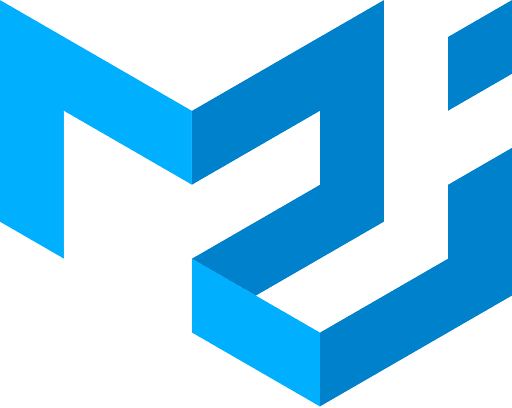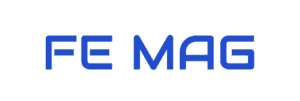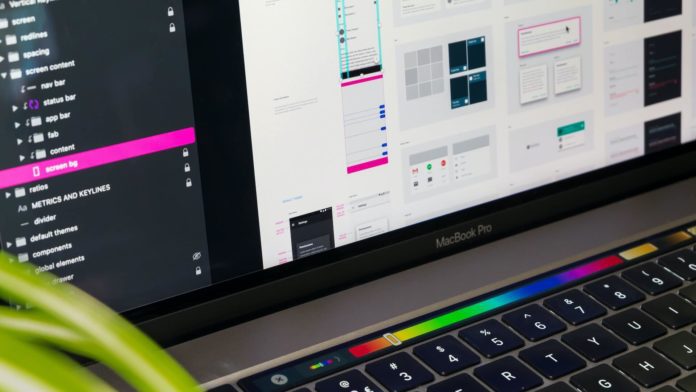Are you working on a React project and struggling to choose the right UI framework? With numerous options available, it can be challenging to make a decision. In this article, we will compare and contrast two popular options for React: Material UI vs Tailwind CSS.
Material UI is a widely-used UI library that provides React components designed according to Google’s Material Design guidelines. Conversely, Tailwind is a utility-first CSS framework that allows you to style your elements with pre-defined classes.
This post aims to provide an in-depth comparison of Material UI and Tailwind CSS, helping you choose the most appropriate framework. We will examine both frameworks’ features, advantages, and disadvantages and discuss scenarios where one framework may be more suitable than the other.
In the subsequent sections, we will analyze the key aspects of Material UI and Tailwind CSS, including their ease of use, customization options, performance, and community support. We will also discuss their strengths and weaknesses and provide examples of their use cases.
By the end of this comparison, you should gain a good understanding of the differences between Material UI and Tailwind CSS, and be able to choose the framework that best fits your needs.
Overview of Material UI and Tailwind CSS

Material UI is a popular library for React that provides pre-built components designed according to Google’s Material Design guidelines. It offers a wide range of customizable components, including buttons, cards, and navigation bars, that make it easy to create visually appealing interfaces. Material UI also has built-in support for responsive design, making creating interfaces that look good on any device easy.
![]()
Tailwind CSS, on the other hand, is a utility-first CSS framework that provides a wide range of pre-defined classes that you can use to style your components. With Tailwind CSS, you don’t need to write custom CSS code, which can save you a lot of time and effort. Tailwind CSS also offers a wide range of customization options, making creating unique designs that match your brand accessible.
Comparison of Material UI and Tailwind CSS
In this section, we will compare several aspects of these two frameworks.
Design Philosophy
Material UI follows Google’s Material Design guidelines, which provide a set of principles for creating visual and interactive designs that are intuitive, consistent, and responsive. Material UI’s components and styles reflect this philosophy, focusing on creating a sleek, modern, and polished look and feel.
In contrast, Tailwind CSS takes a more utility-first approach, providing a set of pre-defined classes that allow developers to quickly and easily apply custom styles to their components. While Tailwind CSS does offer some design presets, its focus is on providing flexibility rather than enforcing a particular design aesthetic.
Popularity
Material UI is one of the most widely-used UI libraries for React, with a large and active community of contributors and users. Its popularity is partly due to its use of Google’s Material Design guidelines, which many developers appreciate for its clean and modern design aesthetic.
Tailwind CSS, on the other hand, has gained popularity in recent years due to its utility-first approach, which allows developers to easily style their components with pre-defined classes. Its flexibility and ease of use have made it a popular choice among developers who want to quickly build and prototype web applications.
While Material UI may have a larger and more established community, Tailwind CSS has been gaining in popularity due to its unique approach to CSS styling.
Learning Curve
Material UI provides a more structured and opinionated approach, which means it can be easier for beginners to get started. The library also includes comprehensive documentation and a wide range of examples, which can make it easier to learn.
In contrast, Tailwind CSS takes a more flexible and utility-based approach, which can be a bit more challenging to learn for those who are new to CSS. However, Tailwind CSS offers extensive documentation, including detailed explanations of its utility classes.
Material UI may be the easier option for beginners, while Tailwind CSS may be better suited for those with more advanced CSS skills.
Flexibility
When it comes to flexibility, Tailwind CSS has the upper hand compared to Material UI. This is because Tailwind CSS offers a utility-first approach that allows for more fine-grained control over individual styles. Developers can easily customize and tweak the styles by adding, modifying, or removing the pre-defined classes in the HTML markup.
Material UI follows a more opinionated approach, which means that it offers a predefined set of styles and components that are meant to be used in a specific way. While this can make it easier for developers to quickly create consistent and visually appealing designs, it can also limit the degree of flexibility that developers have in terms of customizing the styles.
Performance
Both Material UI and Tailwind CSS are optimized for speed and efficiency. Material UI is known for its clean and minimal code, which ensures fast loading times and minimal impact on performance.
Tailwind CSS, on the other hand, is designed to generate optimized and concise CSS, which helps to minimize the size of the final CSS file.
Customization
Tailwind CSS offers more customization options than Material UI because it provides a broader range of utility classes that can be used to create unique designs.
Material UI, on the other hand, offers less customization but provides a more consistent design language that can be useful for projects that require a consistent look and feel.
Accessibility
Both Material UI and Tailwind CSS offer excellent accessibility support, with features such as color contrast and ARIA attributes built-in to their components.
Community Support
Both Material UI and Tailwind CSS have active and supportive communities that offer resources and tools for developers.
Material UI has a dedicated team of maintainers who ensure that the library is up-to-date and bug-free. It also has a large community of contributors who create and share components and extensions.
Tailwind CSS has a more decentralized approach to community support, with many community-built plugins and tools available. It also has a well-documented website and an active community forum where developers can ask questions and get help from other users.
Pros and Cons of Material UI and Tailwind CSS
While both Material UI and Tailwind CSS have their own set of strengths and weaknesses, there are a few factors that can help developers make an informed decision.
Material UI
Pros
- Provides a rich set of pre-built components following the Material Design guidelines
- Offers a consistent and visually appealing design system out of the box
- Includes comprehensive documentation and an active community, making it easier to get started and find support
- Supports server-side rendering for better SEO and faster initial load times
- Includes features like animations and transitions for adding visual effects
Cons
- Can be less flexible in terms of customizing the styling and layout of components
- Requires more CSS and JavaScript knowledge to fully leverage its customization options
- Can result in larger bundle sizes due to its inclusion of pre-built components and styles
Tailwind CSS
Pros
- Highly customizable with a vast range of pre-defined classes, making it easy to create unique designs without writing CSS from scratch.
- Supports rapid development with its utility-first approach, allowing developers to quickly add styles to their components.
- Lightweight and fast-loading, as it generates only the necessary CSS code for the components used.
- Can be used with any JavaScript framework, not just React.
- Offers a wide range of third-party plugins and extensions to extend its functionality.
Cons
- Its utility-first approach can result in large and complex class names, which may make the code difficult to read and maintain.
- It requires a good understanding of CSS and responsive design, as the pre-defined classes must be used appropriately to achieve desired results.
- Lacks some of the pre-built components and functionality that Material UI provides, requiring more customization and development time for some features.
- May require additional configuration and setup to work with other tools and frameworks, which may add to development time.
Use Cases for Material UI and Tailwind CSS
Now that we have compared the features, benefits, and drawbacks of Material UI and Tailwind CSS, it’s time to explore the scenarios where they can be used.
Material UI is an excellent choice for projects that prioritize a consistent look and feel, a strong set of pre-built components, and good accessibility. It’s well-suited for designing and developing web and mobile applications that need a lot of consistency.
Here are the top companies that are known to be using Material UI:
- Amazon Web Services (AWS)
- IBM
- Dropbox
- Walmart
- PayPal
- Netflix
- Uber
- Airbnb
In contrast, Tailwind CSS is a framework that’s great for building responsive and mobile-first designs. It’s a popular choice for rapid prototyping and creating visually appealing websites without the need for custom CSS.
Tailwind CSS is a relatively newer framework compared to Material UI, and there isn’t as much public information about the companies using it. However, here are some companies that have publicly shared their use of Tailwind CSS:
- Heroku
- GitHub
- Stripe
- Medium
- Kickstarter
- Buzzfeed
- TED
- Algolia
- Starbucks
- Firefox
Choosing Between Material UI and Tailwind CSS
After examining the features, pros, and cons of Material UI and Tailwind CSS, you might still be wondering which framework is the best fit for your project. Here are some things to take into account when deciding between the two frameworks.
First, consider the scope and requirements of your project. If you need to create complex, highly consistent user interfaces with an emphasis on design aesthetics, Material UI might be the better choice. On the other hand, if your project involves rapid prototyping or creating simple, functional interfaces, Tailwind CSS could be a better option due to its focus on utility classes.
Next, think about the skills and preferences of your development team. If they are already familiar with React and have experience with Material Design principles, Material UI might be the better choice. Alternatively, if your team is experienced with CSS and prefers a more unopinionated approach, Tailwind CSS could be the better choice.
Consider the performance requirements of your project as well. Material UI has a larger file size due to the inclusion of design elements and pre-built components. If you’re working on a project with strict performance requirements, you may want to consider the smaller file size and simpler CSS of Tailwind CSS.
Finally, it’s worth considering the ecosystem and community support for each framework. Material UI has a more extensive and established community with more resources and documentation available. Tailwind CSS is also growing rapidly and has a dedicated community, but it may not have the same level of support and help as Material UI.
Overall, the choice between Material UI and Tailwind CSS depends on your project’s specific requirements, the skills and preferences of your development team, and the performance and community support needs of your project.
If you are switching from one framework to another, keep in mind that both Material UI and Tailwind CSS have different approaches to styling, so you may need to adjust your development processes accordingly. But with some practice and experimentation, you can get up to speed and create beautiful, functional user interfaces with either framework.
Material UI vs Tailwind CSS: Conclusion
In conclusion, both Material UI and Tailwind CSS are highly capable frameworks for building modern web applications. While Material UI is opinionated and focuses on providing pre-designed components and styles, Tailwind CSS provides a highly customizable and flexible way of creating custom designs. Ultimately, the choice between the two frameworks will depend on the specific requirements and preferences of the developer and project.
I hope this article has provided valuable insights into the differences between Material UI and Tailwind CSS and has helped you make an informed decision on which one to choose. I encourage you to share your own experiences and insights in the comments section below.
If you’re interested in learning more about other popular UI frameworks, check out my other comparisons of:
Thank you for reading!

